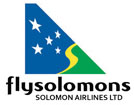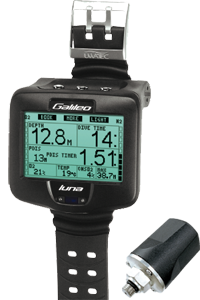 |
 |
|
| Marion Dufresne memorial at Te Hue Bay, Northland | ||
In 1772, a French expedition, under command of Marc-Joseph Marion Dufresne arrived in New Zealand waters to explore the country. It was the fourth recorded European expedition to encounter New Zealand. (The others were Tasman in 1642, Cook in 1769 and Surville in 1769). The Dufresne Expedition consisted of two ships, the Mascarin (with Dufresne) and the Marquis de Castries commanded by 22 year-old Ambroise-Bernard-Marie Le Jar du Clesmeur. These vessels were described as flutes. On the very first day (April 16, 1772) the two ships anchored off the New Zealand coast at Spirits Bay at the top of the North Island, a near disaster struck the expedition. A storm with strong North East winds hit the anchorage, and both ships started dragging towards the rocky shore. Anchor cables broke, additional anchors were deployed, but eventually both ships had to quickly abandon anchors (bowers) in the early morning of April 17th, and sail away to save themselves. Five anchors had been lost. The anchors were a crucial part of the ships ability to explore safely, and the loss seriously compromised the whole voyage.
In February 2010, Archaehistoria, in partnership with Mr Nick Freeman, and after more than two years of meticulous historical research, planning and preparation, has also teamed up with the New Zealand Underwater Heritage Group and the Far North Regional Museum for a first attempt in history to relocate the Dufresne anchors.
During Archaehistoria’s evaluation and research of the feasibility of re-locating and archaeologically surveying the anchors in situ, the discovery of excellent records of the Dufresne expedition meant there is a good chance of success. It is very fortunate, but a number of journals from members of the 1772 expedition still exist. In particular, Du Clesmeur maintained a highly detailed navigational log. For the anchorage position (which we will call position “C” for Castries), he records no less than eight bearings! Richard Theakston in January 2010 plotted these bearings on a modern electronic chart for Archaehistoria, using magnetic variance of 11 degrees for 1770, and found them surprisingly accurate. (Thanks Rich for your excellent work!). Detail of the fateful day in April 1772 The best source for the sequence of events for this day is De Clesmeur’s log. There is some discrepancies with other expedition diaries/accounts, but Archaehistoria’s interpretation is as follows.
At 0915, April 16, 1772, the Castries anchored in 21 fathoms (38.4 meters) of water in Spirits Bay (the French named it Anchor Bay) along with the Mascarin. During the day, exploration was made ashore in search of badly needed fresh water. A strong NE (some ENE, NNE) wind is blowing and steadily increased with a heavy swell. At 1715, the Castries began to drag. Du Clesmeur drops the larboard bower (port anchor), which holds the ship. During the night the NE gale rages until at 0330, April 17, when one of the anchor cables snaps, and the ship begins to drag again. Archaehistoria has named this the 0330 Anchor. A third “big anchor” is dropped, but because it’s cable is fouled, the flute (with 100 crew and 16 six pound cannons aboard) continues to drag the two anchors towards the rocks on the Western side of Spirits (Piwhane) Bay. Archaehistoria calls these anchors the Two 10-minute anchors. Now in serious danger, the 22 year old Du Clesmeur quickly orders the cables cut and the ship barely escapes being wrecked. As he records in his log, “I am in no doubt that 10 minutes later it would have been impossible for us to raise ourselves above the coast….I was, at the outside, a quarter of a league from the rocks when the vessel began to forge ahead”. The Mascarin too had a rough night, with seas constantly breaking over her forecastle and also dragging, cutting off two bowers to sail away for safety. Unlike the Castries, the Mascarin crew cleverly buoyed their anchor cables before letting them go.
In less than a couple of days on a strange coast of this unexplored land, the French expedition had nearly met disaster. Mr. Du Clesmeur worries about the five missing anchors…. “whose loss could well lead to events most damaging to the success of our mission”.
As the anchors was so valuable, the French would go to great trouble to get them back again. It was nine days later, after battling stormy seas, when the French returned to the dangerous anchorage. The Lieutenant on the Mascarin , Jean Roux, records they anchored in 14 fathoms (25.6 meters) of water and immediately found the two buoys nearby and salvaged the respective bowers. Then two long boats and a third boat spent two days and a night dragging for the three lost Castries anchors. They were not successful. The Mascarin gave two of their anchors to the Castries and the expedition continued on to the Bay of Islands where the French stayed for two months. The French lived peacefully for most of the time in the Bay of Islands with a heavy Maori population in the area. Eventually, the relationship turned sour, and the Maoris killed Marion Dufresne and the French soon after departed.
Significance
• Very old, huge, impressive anchors
• The first archaeological evidence of the Dufresne expedition to New Zealand. They are also likely to be perhaps the most visually significant archaeological evidence to be found.
• They maybe the only archaeological evidence to be found of the Dufresne expedition.
• The second oldest European artefacts to be found in New Zealand.
Interestingly, they are not the only French explorer’s anchors on the Northland coast, and they are not the oldest either! The legendary Kelly Tarlton and Michael Bearsley in the early 1970’s discovered three anchors from Jean Francois Marie de Surville’s ship the St. Jean Baptiste lost in Doubtless Bay in 1769. Two of these anchors have been recovered – one is in the Far North Regional Museum (located at Kaitaia), the other is a spotlight display feature, high up on the wall in the entrance lobby to Te Papa – the National Museum in Wellington. They are both impressive sights. They are wrought iron manufacture and weight 1500 kilograms each. These Surville anchors were lost just three years before Dufresne--- it is presumed the Dufresne anchors will be identical in design and size.
The Plan
To locate and survey the three anchors from the Marquis de Castries lost in Spirits Bay. There is no intention at this early stage to recover the anchors.
Using Point C as a starting point, we plotted the theoretical drag line of the Castries across the bay. The 0330 anchor will be deepest and further out in the bay by itself. The first thing we will look for is easiest anchors---the two 10-minute ones. These should be around 25 meters depth. After consulting a number of parties, the impression is that “10-minutes” off the coast is probably some 500-600 meters. On the plotter, we will programme in a number of weigh points along the theoretical drag line to use as a reference. Also, we will programme in two rectangular search areas. We will evaluate how we go after completing the first, then may commence the second search box.
Archaehistoria / New Zealand Underwater Heritage Group and Mr Nick Freeman have had a great deal of experience in operating magnetometer surveys. Previous successful surveys include HMS Buffalo, Boyd and other wrecks. Operating such sensitive and finicky electronic gear in such a harsh environment as the open ocean is not easy, and Mr Nick Freeman is highly skilled at it. Knowing the capabilities of the equipment is a large part of it. On this expedition, we will use an electronic plotter to maintain straight as possible search lines to ensure we don’t miss areas. Depth sounder is used to regulate the depth of the mag head which is crucial. Too deep, and the head can be damaged by hitting the bottom, (boat speed is important here too), too deep is also too slow. The mag head has a depth sounder, thus, if you know the depth from the boat sounder, you can set the depth of the mag head. We want about 5 meters off the bottom. The mag will pick up these anchors from about 10 meters away at least, so our search lines will be about that distance apart.
The idea is too increase our chances of finding anchors in the least amount of time by going for the two 10-minute anchors first. Also, it is planned we may be able to use location information from the first two anchors to work backwards to locate the 0330 anchor. It appears the 10 –minute anchors should be close together as they were both cut off at the same time. One was on a shorter length of fouled cable—this will be nearer the shore. The first search is intended to mow 90 –degrees to the presumed NE-SW axis of these two 10-minute anchors. We believe this increases our chance of locating one of the two anchors. From about 0400 to about 0500, on the morning of 17 April 1772, say an hour roughly, the Castries was dragging the two anchors…this would tend to bring them in straight line ahead—would it not? On this basis, if we find one of the pair, we intend searching quickly along the NE-SW axis to locate the other of the pair and surely it would be within 30-40 50 meters of the other.
We can then plot the two GPS positions of the 10-minute anchors and may be able to get a more accurate drag line to reverse back up and locate the 0330 anchor. The boat launch is in Te Karaka Bay to the East of Pananehe Island.
Archaehistoria is familiar with the area from three previous trips to Spirits Bay. A fourth reconnaissance trip specifically preparing for the Dufresne mission was made in early January 2010.
This is a four day trip. Friday 12th February 2010: drive up North from Auckland towing boat Sat 13th February 2010: mag search; bouy targets. Sun 14th February 2010: mag search; dive & survey targets. Mon 15th February 2010: drive back to Auckland.
Challenges of this Project
• Funding. This project is entirely privately funded by Archaehistoria and Mr. Nick Freeman.
• Weather. Just as the French were caught in 1772, the beautiful and remote Spirits Bay is very exposed. In addition, huge volumes of water stream across the bay as the moon travels across New Zealand and tries to pull the Tasman Ocean around the top end. The tidal currents will oppose the wind direction at some point and quickly kick up rough seas. As we only have a very small boat, (a 4 meter inflatable), we are very vulnerable to this. Bad weather will quickly kill this expedition before it is even started. As the French said of the seas in the area, they are “precipitous”!
• No easy access to the coast for boats. We have to launch into the brackish stream, shallow drive 400 meters to the coast and then haul the boat a further 200 meters across dry sand to the sea.
• Distance from home in Auckland. It is a 7 hour drive from Auckland.
• Water depth. Towing the magnetometer in this depth of water is not easy. From experience, we have planned to use extra weights to weigh the head down.
• Typical difficulties of logistics, fuel, outboard motors, boats, boat trailers, gear, echo sounders, compasses, GPS, batteries, electronics, dive gear, photographic equipment…all in a days work for Mr Nick Freeman and Archaehistoria!
• Keeping straight mowing lines in the search pattern will be difficult in this area due exposed nature of search site, and consequently high winds and current will slew the boat and also due to the increased resistance from towing the mag in this depth of water
• In the swirling currents & wind it is all too easy whilst towing for the mag cable to connect with the boat propeller with catastrophic, expensive, results.
Acknowledgements
• Nick Freeman for crucial electronic support & partnership
• Michael Bearsley previously plotted the anchorage position, and Des Cottman and Lynn of the Far North Regional Museum, generously made Mike’s pioneering work available to me.
• Mike Fraser of Comm Media Ltd – thank you very much for your website assistance & general support.
• New Zealand Underwater Heritage Group.
• Richard Theakston for computer mapping support
• Far North Regional Museum & curator Des Cottman for enthusiasm and on site assistance.
The Results
We will let you know!
Future
Sometime in the future, if the anchors are located, they may be recovered. This can only happen if proper conservation facilities are immediately on hand. As soon as these 238 year old anchors are exposed to atmospheric oxygen, they will rapidly deteriorate and fall to pieces. The conservation treatment takes years and is very expensive. If funding for this is not available or there is lack of interest in the anchors, it is best the Dufresne anchors are left in situ and not disturbed. Perhaps one anchor can go to the Far North Regional Museum and another to Te Papa---so both can be displayed simultaneously representing the two major early French exploratory voyages to New Zealand!
 1972 New Zealand postage stamp released for the 200th
1972 New Zealand postage stamp released for the 200th
anniversary of the landing in the Bay of Islands.



 UWATEC Dive Computers
UWATEC Dive Computers

